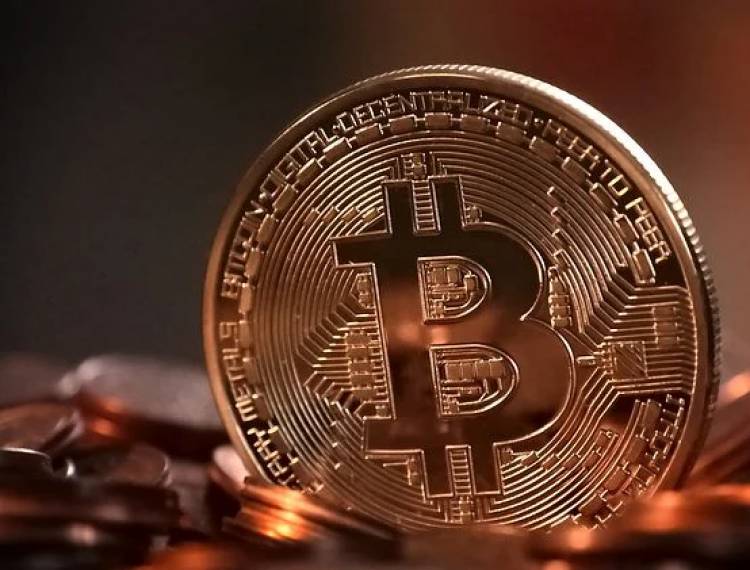Blockchain Cryptocurrency Patents
Blockchain is a distributed ledger system that works as a database to store data of any kind. The blockchain contains numerous blocks linked to each other through hash functions, time stamps, and transaction data. each block is related to another thus modification in any block is indestructible. It is a decentralized system that works as a digital ledger. It was initially introduced as a part of cryptocurrency Bitcoin.

Blockchain and the Technology
Blockchain is a distributed ledger system that works as a database to store data of any kind. The blockchain contains numerous blocks linked to each other through hash functions, time stamps, and transaction data. each block is related to another thus modification in any block is indestructible. It is a decentralized system that works as a digital ledger. It was initially introduced as a part of cryptocurrency Bitcoin. However today it has evolved into a significant open-source software that can be useful in many other services like financial record keeping, shipping of consignments, cross-border payment systems, portable health records, etc.

Cryptocurrency
Cryptocurrency on the other end uses blockchain technology to circulate as a digital currency. It is a virtual currency that is secured by cryptography or encryption techniques. The blockchain technology enforced on the cryptocurrency prevents it from counterfeiting as it is a decentralized set up with a distributed ledger. The benefit of decentralized control is that it eliminates the risk of centralized control i.e anybody having excess control over the database can tamper with it. Bitcoin is the first cryptocurrency introduced with blockchain technology, however, there are various other cryptocurrencies today in the market such as Litecoin, Ethereum, Ripple, etc. A cryptocurrency is a new form of a digital asset that is even traded today. However, a defining feature of cryptocurrency is that it is not generally issued by any central authority.
Patenting Blockchain Cryptocurrency
Cryptocurrencies still draw the eye of investors, entrepreneurs, the overall public, and also regulators. The market capitalization of Bitcoin alone is 199.62 billion U.S. dollars in 2020. Some economists have predicted that cryptocurrencies are getting to enter the institutional market. Moreover, there's also an opportunity that it might have an area within the Nasdaq. The RBI has also confirmed that currently there's no banking ban on the crypto industry. It had been in consequence of the judgment passed by the Supreme Court of India against the RBI circular that ‘banking ban on the crypto industry is unconstitutional’.
With the increased popularity of cryptocurrencies, there's a rise in filing for patents application. However, there exists confusion about the patentability of blockchain-based inventions.
As per Section 3(k) of the Indian Patent Act, 1970 (a mathematical or business method or a computer virus intrinsically or algorithms) computer programs and algorithms can't be patented in India. The exclusion of computer programs intrinsically has raised a spread of questions on software patentability in India within the growing technological and digital world including the patentability of blockchain cryptocurrencies. However, computer code in itself is often given protection under the Copyrights Act as a “literary work” but isn't patentable. There has been continuing debate regarding the interpretation of the term ‘per se’.
In Alice Corp v CLS International, the US Supreme Court on one side held that computer-implemented methods of assessing settlement risk within the financial transactions are ineligible for patent protection which laws of nature, natural phenomena, and abstract ideas aren't patentable because they're "the basic tools of scientific and technological work, on the opposite side, it also held that the invention must contribute something quite an ‘abstract idea’.In 2015, the Delhi supreme court in Telefonaktiebolaget Lm Ericsson v. Intex Technologies relied on the principles laid down within the Alice v. CLS Bank and held that “any invention which features a technical contribution or features a technical effect and isn't merely a computer virus per se” is patentable. the EU Courts within the Viacom decision held that “the invention must end in a technical effect/contribution”.
For the needs of patent registration in India, the method claims of software patents should be drafted together with apparatus/system claims including hardware features, which shouldn't be general hardware, like a computer, or a mobile device. Additionally, the system/apparatus claims should be limited by novel aspects of the corresponding methods or processes. The CRI Guidelines in 2017 have emerged as a further hurdle within the process of the patent grants in India. The CRI guidelines clearly state that a database may be a computer virus ‘per se’ and thus it's excluded from patentability. It also says that ‘novel hardware’ is one among the wants for patentability of computer-related inventions. However, the revised CRI guidelines have removed the need for novel hardware features for the patentability of software programs.
Blockchain technologies and blockchain cryptocurrency patents are recognized all around the world. As of 2020, IBM has 240 blockchain patents, Rechain 279, Webank 282, and Nchain has 402 patents total. Alibaba has a maximum number of patents on Blockchain Technology.
So, in a nutshell, we will say that the US and China are leading the Patent industry in Blockchain Technology. As this technology is gaining recognition, the patent applications are rising during this field particularly in the US, China, South Korea, UK, and India but most of them face challenges in getting Patented.
Cryptocurrencies repose on the inspiration of blockchain, it expands employing a distributed-ledger based transaction system during a decentralized network. The patent rules that apply to blockchain technology also must apply to blockchain cryptocurrencies. Obtaining a patent on cryptocurrency is like getting a software patent supported by the abstract idea/algorithm behind the technology’s functionality since both are supported by the performance of a series of steps. invention covering techniques that improve the functionality of technology, processes, or security of payment many times are considered eligible for patentability.
Some of the remarkable cryptocurrencies filed by big companies the world over are the subsequent
-
Paypal filed a patent with the USPTO for a technology that allegedly can speed up cryptocurrency payments through the use of secondary wallets. the method that PayPal seeks to optimize settles cryptocurrency payments between merchants and buyers, on retail or e-commerce platforms. the utilization of secondary wallets would allow the transfer of unique keys of buyers and sellers to be transferred privately.
-
Mastercard obtained a patent with the USPTO that grants it rights for a way for “managing fractional reserves of blockchain currency.” the tactic covers the storage of both fiat wealth and cryptocurrencies under one account.
Amazon obtained two patents with the USPTO:
-
The first patent covers “Signature Delegation” and describes cryptographic signatures during a Merkle-tree based data scheme. Merkle-trees are one of the elemental components of the blockchain. Amazon’s patented arrangement enables participants to see if data is unaltered or to make sure that other participants aren't sending fake data.
-
The second covers “Extending Grids in Data Storage Systems” and describes a way for creating extendable shards during a database. this is often useful for creating considerable flexible datasets, like those seen during a blockchain. the thought behind the patent is that layering the system structure will make sure the efficiency and portability of the system.
BY-
ANKITA PARIDA












